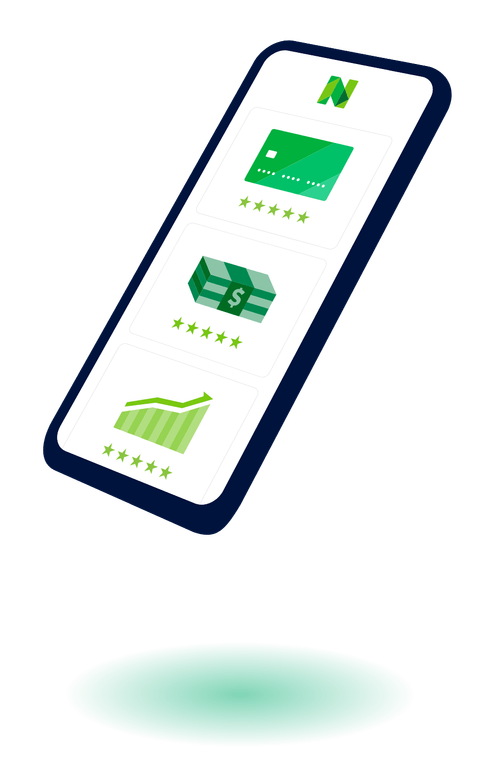How to Write a Business Proposal in 7 Steps
Learn how to write a business proposal in our guide covering business proposal examples, tips, and best practices.

Many, or all, of the products featured on this page are from our advertising partners who compensate us when you take certain actions on our website or click to take an action on their website. However, this does not influence our evaluations. Our opinions are our own. Here is a list of our partners and here's how we make money.
Whether you’re a B2B or a B2C company, you’re in the business of convincing customers to choose to spend their money with your business. For a B2B company that process usually involves a business proposal. In the B2B industry, once you've attracted new customers, which are most likely other businesses, you have to actually make a deal. Unlike B2C companies, who use marketing strategies and then hope their customers respond and purchase their product and service, there's a little more involved in this exchange. That's where your business proposal will come into the picture.
Luckily, even though your process and the exact format for your business proposal can be unique to your company, there is also a general formula you can follow to make things easier, especially the first few times you write a proposal.
In this guide, we'll walk you through the general steps of how to write a business proposal—including how to decide what kind of proposal you're writing, how you should organize it, and what information you should include.
Smart money moves for your business
Grow your small business with tailored insights, recommendations, and expert content.

How to write a business proposal: 7 essential steps to follow
With these starting points in mind, let's get down to the process. Whether you’re just learning how to write a business proposal, or want to change up the one you’ve already been using, you’ll want to break down writing into a step-by-step approach. The organization is key when you’re writing a business proposal—structure will not only help you answer the core questions mentioned above, but it’ll also help you create consistent, successful proposals every time you’re pitching new business.
This being said, when writing a business proposal, you can break down the document into these sections:
- Introduction
- Table of contents
- Executive summary
- Project details
- Deliverables and milestones
- Budget
- Conclusion
- Bonus: Appendix (if necessary)
Step 1: Introduction
The introduction to your business proposal should provide your client with a succinct overview of what your company does (similar to the company overview in your business plan). It should also include what sets your company apart from its peers, and why it’s particularly well-suited to be the selected vendor to undertake a job—whether the assignment is a singular arrangement or an ongoing relationship.
The most effective business proposal introductions accomplish more with less: It’s important to be comprehensive without being overly wordy. You'll want to resist the temptation to share every detail about your company’s history and lines of business, and don’t feel the need to outline every detail of your proposal. You'll want to keep the introduction section to one page or shorter.
Step 2: Table of contents
Once you've introduced your business and why you're the right fit for the client you're submitting the proposal to (a quasi-cover letter), you'll want to next create a table of contents. Like any typical table of contents, this section will simply outline what the client can expect to find in the remainder of the proposal. You'll include all of the sections that we'll cover below, simply laid out as we just did above.
If you're sending an electronic proposal, you may want to make the table of contents clickable so the client can easily jump from section to section by clicking the links within the actual table of contents.
Step 3: Executive summary
Next, your business proposal should always include an executive summary that frames out answers to the who, what, where, when, why, and how questions that you’re proposing to the client lead. Here, the client will understand that you understand them.
It's important to note that despite the word "summary," this section shouldn't be a summary of your whole business proposal. Instead, this section should serve as your elevator pitch or value proposition. You'll use the executive summary to make an explicit case for why your company is the best fit for your prospect’s needs. Talk about your strengths, areas of expertise, similar problems you’ve solved, and the advantages you provide over your competitors—all from the lens of how these components could help your would-be client’s business thrive.
Step 4: Project details
When it comes to how to write a business proposal, steps four through six will encompass the main body of your proposal—where your potential client will understand how you’ll address their project and the scope of the work.
Within this body, you'll start by explaining your recommendation, solution, or approach to servicing the client. As you get deeper within your explanation, your main goal will be to convey to the client that you’re bringing something truly custom to the table. Show that you've created this proposal entirely for them based on their needs and any problems they need to solve. At this point, you'll detail your proposed solution, the tactics you’ll undertake to deliver on it, and any other details that relate to your company’s recommended approach.
Step 5: Deliverables and milestones
This section will nest inside the project details section, but it’s an essential step on its own.
Your proposal recipient doesn’t get merely an idea of your plan, of course—they get proposed deliverables. You'll outline your proposed deliverables here with in-depth descriptions of each (that might include quantities or the scope of services, depending on the kind of business you run). You never want to assume a client is on the same page as you with expectations, because if you’re not aligned, they might think you over-promised and under-delivered. Therefore, this is the section where you'll want to go into the most detail.
Along these lines, you can also use this section of the prospective client's proposal to restrict the terms and scope of your services. This can come in handy if you’re concerned that the work you’re outlining could lead to additional projects or responsibilities that you’re not planning to include within your budget.
Moreover, you might also want to consider adding milestones to this section, either alongside deliverables or entirely separately. Milestones can be small, such as delivery dates for a specific package of project components, or when you send over your first draft of a design. Or, you can choose to break out the project into phases. For longer projects, milestones can be a great way to convey your company’s organization and responsibility.
Step 6: Budget
There’s no way around the fact that pricing projects isn’t easy or fun—after all, you need to balance earning what you’re worth and proving value, while also not scaring away a potential client, or getting beaten out by a competitor with a cheaper price. Nevertheless, a budget or pricing section is an integral part of a business proposal, so you'll want to prepare your pricing strategy ahead of time before getting into the weeds of any proposal writing.
This being said, if you fear the fee might seem too high to your potential client, you might decide to break out the individual components of the budget—for example: social media services, $700; web copywriting $1,500—or create a few different tiers of pricing with different services contained in each. The second approach might not work for all types of businesses or proposal requests, but it may be worth considering if you’re worried about your overall fee appearing steep.
With these points in mind, once you've determined how to outline your pricing, you'll list it out (you might even include optional fees or services) and the overall cost for the scope of work you've described.
Step 7: Conclusion
Finally, your conclusion should wrap up your understanding of the project, your proposed solutions, and what kind of work (and costs) are involved. This is your last opportunity to make a compelling case within your business proposal—reiterate what you intend to do, and why it beats your competitors’ ideas.
If you're writing an RFP, again, meaning a potential client has requested this document from you, you might also include a terms and conditions section at this point. This end-on piece would detail the terms of your pricing, schedule, and scope of work that the client would be agreeing to by accepting this proposal.
Bonus step: Appendix (optional)
After the conclusion, you might also decide to include an appendix—where you add any supplemental information that that either doesn’t fit within the main proposal without being disruptive for the reader, or is less than essential to understanding the main components of your proposal. You’ll likely only need an appendix if you have stats, figures, illustrations, or examples of work that you want to share with your potential client. This being said, you might also include contact information, details about your team, and other relevant information in this section.
If you don't have any additional information to include, don't worry—you can end your business proposal with the conclusion section.
AD
Boost Your Credit for a Strong Future
Better credit¹ can open up new financial opportunities for your business.
Start building faster¹
On average, users with starting credit under 600 saw +84² points in 1 year with on-time payments.

The power of tri-bureau reporting
Kikoff reports to Equifax, Experian, & TransUnion monthly.
Fast and easy
No credit check. No interest. No hidden fees.
Business proposal considerations
Before you dive into determining how to write a business proposal that will give you a competitive edge, there are a few important things to keep in mind.
First, you'll want to make sure that you’re accomplishing the right objectives with your proposal. When writing a business proposal, you’re trying to walk a line between both promoting your company and addressing the needs of your would-be client, which can be difficult for any company to do.
This being said, you'll want to remember that a business proposal is different than a business plan, which you likely already wrote for your company when you were starting your business. Your business plan spells out your company's overall growth goals and objectives, but a business proposal speaks directly to a specific could-be client with the purpose of winning their business for your company.
With this in mind, in order to write a business proposal for any potential client, you'll need to establish your internal objectives and how these will contribute to the work you're proposing. To explain, you'll need to consider the following:
- What tasks will need to be done for this work?
- Who will do each task, and oversee the job at large?
- What you’ll charge for the job?
- Where will the work be delivered?
- When will it be done?
- Why are you the best fit for the job the client needs to be accomplished?
- How will you achieve results?
Not only are these questions at the heart of clear and concise writing, but you also won't be able to write your business proposal without answers to them. So as you're going through the different pieces of your business proposal, keep in mind the objectives of your business, while also remaining persuasive regarding why the potential client should work with you instead of someone else.
The next important thing you'll need to keep in mind before you start writing a business proposal is what kind of proposal are you writing. Essentially, there are two types of business proposals—solicited proposals where someone requested the proposal from your company—and unsolicited proposals, where you're sending the document to another business unprompted.
In the case of solicited proposals, often called RFPs (short for a request for proposal), it’s likely that this potential client already knows at least a little about your business. With these kinds of business proposals, you'll want to spend less time convincing the client that you're the best small business consultant for the job and more on making your proposal feel custom to their specific brief, project, or problem. On the whole, the less generic your business proposal is, the more likely you are to win the work.
Unsolicited proposals, on the other hand, are much harder to sell.
As you’re writing a business proposal to a company that doesn’t know they may need your services, you’ll want to focus on getting them to understand why your company is specifically unique. You want to show them that you can add significant value to their business that they don’t already have. If there is currently someone performing the function you would like to, the sell will even be more difficult.
Business proposal examples
So, now that we've gone through all of the steps to show you how to write a business proposal, let's discuss some examples. As you go through the writing process, you might find it's helpful to consult external resources to review business proposal samples or templates and see how other businesses have structured these types of documents. Specifically, it might be even more helpful to review business proposal examples that relate to your particular industry—such as marketing, advertising, or finance.
General business proposal sample
If you're looking for a general business proposal example, you might consult BPlan, which offers advice, examples, and templates for the documents that are required to plan and operate a small business. In the BPlan sample, BPlan breaks their example into three overarching parts—a problem statement, a proposed solution, and a pricing estimate. This may be a good place to start if you're writing a business proposal for the first time and need a simple, general example to follow.
RFP sample
For a solicited proposal or RFP, you may want to reference a business proposal example that specifically operates under the assumption that you've been asked for this proposal. In this case, you may check out one of the downloadable RFP templates from Template Lab.
Template Lab offers both Word and PDF versions of their templates—and these business proposal samples will include sections more appropriate for RFPs including terms and conditions, scheduling, and points of contact.
Business proposal template services or software
For the most advanced and plug-and-play type business proposal samples, you may decide to utilize a service like Proposify or PandaDoc. These software services allow you to choose from their library of professionally designed and outlined business proposal examples (which are also usually industry-specific) and customize the template for your business's needs.
It's important to note, however, that although you may be able to sign up for a free trial for these services, most of them will eventually require a paid subscription.
5 best practices for writing a business proposal
Writing a business proposal can seem overwhelming at first, as it requires you to provide information about your company and its services as they relate specifically to what your prospect needs. As you go through the process again and again, however, it will become easier and easier to write a succinct and effective business proposal.
This being said, there are a few best practices you can keep in mind to help you as you get started:
1. Be direct.
Although you might feel the urge to show off your language skills while trying to impress a client, when you’re writing a business proposal, tour best bet to win business is to be clear, concise, and direct. You won't want to use overly flowery language or anything that could possibly be misconstrued.
2. Don’t leave room for ambiguity.
You'll want to make sure your proposal is straightforward and easy to understand, with no room for misinterpretation around what you say you’ll do or deliver.
Therefore, you'll want to avoid overly complicated industry jargon to be sure your client can understand exactly what you're talking about and what it means within the scope of your (and their) business.
3. Write for the right audience.
If you were writing a proposal for a specialty food business, it shouldn't look or sound exactly the same as if you were writing a proposal for an asset management company. You'll always want to keep your audience in mind as your craft and develop your proposal.
Ultimately, your best bet is to be straightforward, clear, and stick to the details, but you also shouldn't be afraid to tailor your writing to your audience so that your client feels that the proposal has truly been created with their business in mind.
This being said, your proposal should show that you not only understand your potential client but that you also respect them professionally.
4. Consider a title page.
Although this may not be necessary for a shorter business proposal, a title page can help with the general organization, flow, and professional feel of your document.
Like a title page for any other type of report, this one-page cover sheet would precede the remainder of your proposal and would likely include your business's name, contact information, and logo, as well as who you're submitting the proposal to.
Depending on your business or the potential client you're submitting the proposal to, you might decide that a title page is unnecessary, however, it's worth keeping in mind that it may be something to visually draw in your reader from the start.
5. Err on the side of brevity.
Finally, within the world of business proposals, shorter is usually better. This isn't to say, of course, that you should leave out details or omit important sections—it simply means that you should try to find the most succinct way to say what you need to say and get your point across to the potential client.
The bottom line
There's no doubt about it—learning how to write a business proposal is a lot of work. Luckily, however, you can follow our steps so you know what to include in your proposal and how to include it.
Ultimately, selling your services to potential clients is part of running and managing your business and as you do it again and again, it will only become easier.
This being said, as you go through the lifecycle of your business, you'll begin to accumulate a library of business proposals that you can continuously reference and use to develop your pitching strategy and writing process based on proposals that have and have not worked. And, hopefully, by taking the time to invest in this business proposal process, you'll be winning the work you need to grow your business.
This article originally appeared on JustBusiness, a subsidiary of NerdWallet.
Article sources
NerdWallet writers are subject matter authorities who use primary,
trustworthy sources to inform their work, including peer-reviewed
studies, government websites, academic research and interviews with
industry experts. All content is fact-checked for accuracy, timeliness
and relevance. You can learn more about NerdWallet's high
standards for journalism by reading our
editorial guidelines.
More like this
Related articles








